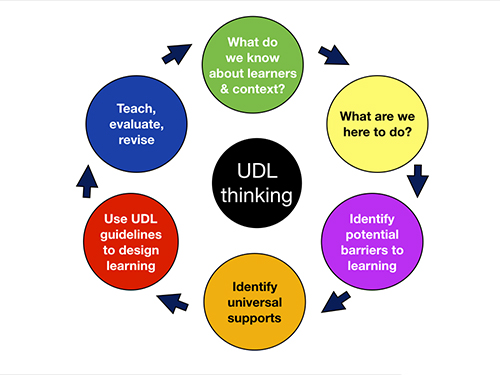
05 October 2020 – Osman Bedel –
Universal Design for Learning: Unlocking Inclusive Education for All
In today’s rapidly evolving educational landscape, the focus on inclusion and accessibility has gained immense importance. Recognizing that learners possess diverse abilities, learning styles, and preferences, educators and researchers have embraced Universal Design for Learning (UDL) as a powerful framework to foster inclusive and effective learning environments. UDL promotes the idea that education should be accessible to all learners, regardless of their individual differences. By integrating UDL principles into instructional design, educators can create an environment that nurtures every student’s unique strengths and provides equitable learning opportunities. In this blog post, we will explore the fundamental concepts and benefits of Universal Design for Learning.
Understanding Universal Design for Learning
Universal Design for Learning is an educational framework that acknowledges and embraces learner diversity. Inspired by the principles of universal design in architecture, which aims to create spaces accessible to people with varying abilities, UDL aims to build inclusive educational environments that cater to the needs of all learners. It recognizes that learners possess different backgrounds, learning styles, preferences, and levels of abilities. Therefore, the traditional “one-size-fits-all” approach to education becomes obsolete, giving way to a more flexible and adaptable model.
The Three Principles of UDL
-
Multiple Means of Representation: Providing information in various formats and allowing multiple pathways for comprehension. This involves offering content through text, visuals, videos, audio, and interactive elements, ensuring that learners can access information using their preferred modalities.
-
Multiple Means of Action and Expression: Encouraging learners to demonstrate their understanding and knowledge in diverse ways. Students should have options to express themselves through writing, speaking, multimedia presentations, artistic creations, or any other means that align with their strengths and abilities.
-
Multiple Means of Engagement: Fostering motivation and sustaining learners’ interest by incorporating activities and materials that resonate with their individual interests and backgrounds. This principle emphasizes the importance of providing choices and creating a supportive learning community.
Benefits of UDL
-
Inclusive Education: By implementing UDL principles, educators create a level playing field for all learners, fostering an inclusive environment where every student can access and engage with the curriculum. Students with disabilities, English language learners, and those who may struggle with traditional instructional methods can thrive when given multiple means of representation, action, and engagement.
-
Personalized Learning: UDL recognizes that learners have different strengths, preferences, and interests. By providing multiple pathways to learning, UDL supports personalized instruction, allowing students to explore and engage with content in ways that align with their individual needs and abilities. This approach promotes a deeper understanding of the subject matter and encourages students to take ownership of their learning.
-
Increased Engagement and Motivation: UDL’s emphasis on multiple means of engagement helps to captivate students’ interest and motivation. By incorporating various materials, activities, and assessments that connect with students’ interests and cultural backgrounds, educators can create an engaging and stimulating learning environment for all learners.
-
Enhanced Learning Outcomes: When instructional materials and methods are designed with UDL principles in mind, students are more likely to achieve better learning outcomes. By addressing diverse learning styles and preferences, UDL promotes deep understanding, critical thinking, and problem-solving skills, allowing students to develop a broader range of competencies.
Universal Design for Learning empowers educators to create learning environments that embrace diversity and promote inclusivity. By providing multiple means of representation, action, and engagement, UDL allows all learners to access information, express their understanding, and engage with the curriculum in ways that suit their individual needs and strengths. Implementing UDL principles unlocks the potential of every student, enabling them to thrive and reach their full educational potential. As we continue to strive for inclusive education, UDL offers a roadmap to






